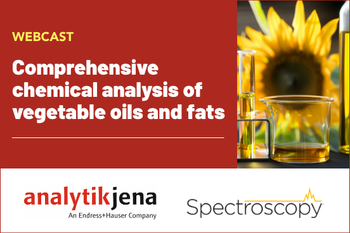
A recent study published in Foods explored using Fourier transform mid-infrared (FT-MIR) spectroscopy combined with multivariate analysis to predict various quality parameters in craft beer.

A recent study published in Foods explored using Fourier transform mid-infrared (FT-MIR) spectroscopy combined with multivariate analysis to predict various quality parameters in craft beer.

A recent study analyzes the level of adulteration of cricket powder in plant flours using vibrational spectroscopy techniques.

A recent review article covered the enormous strides terahertz (THz) spectroscopy has made in food safety applications.

Detecting Fusarium head blight (FHB) in wheat kernels and flour is important in ensuring food safety in the agriculture industry. Here, we recap a recent study that uses non-destructive spectroscopic techniques and machine learning algorithms to detect FHB.

A recent study from Hefei University examined the role that Raman spectroscopy has played in food safety analysis.

A recent study from Korea examined how inductively coupled plasma–optical emission spectroscopy (ICP-OES) and mass spectrometry (MS) to determine the geographical origin of red pepper paste.

This week, Spectroscopy magazine published stories about how mid-infrared spectroscopy is being used to study gas giants in our solar system and malaria vectors, among others.

We recently interviewed Kacie Ho of the University of Hawaii about her study on metals in seaweed, and how they can be monitored and regulated now and in the future.

Scientists from Tamil Nadu, India recently developed a new fluorescence-based chemosensor for selectively detecting trivalent chromium (Cr3+) ions.

Jiangsu University scientists developed Raman-based system for detecting aflatoxin B1 (AFB1), a byproduct of the most common fungus that can arise in moldy peanuts.

A recent study examined the ultraviolet-visible (UV-vis) and infrared (IR) spectra of theabrownins in dark tea.

Scientists from the Lodz University of Technology in Lodz, Poland created a new system to analyze normal and cancer human colon cells.

Chinese scientists recently made a surface-enhanced Raman scattering (SERS)-based approach to detect synthetic antioxidants in food samples.

Here are the top five articles that the editors of Spectroscopy published this week.

Scientists from Nanjing Forestry University recently used a portable hyperspectral imager to help detect maturity stages in Camellia oleifera fruits.

A recent study published in Analytical Chemistry developed a new optical emission spectroscopy (OES) method to analyze food for aromatic molecules.

A group of scientists led by Zozan Guleken of the Gaziantep University of Science and Technology in Gaziantep, Turkey looked into the blood serum composition of childhood obesity (CO) tissues using Fourier transform infrared (FT-IR) spectroscopy.

Here are the top five articles that the editors of Spectroscopy published this week.

A recent study examined the nutritional parameters in cookies using Fourier transform near-infrared spectroscopy (FT-NIR).

In a recent journal article, scientists wrote about on the impact machine learning algorithms have in measuring water quality, and how this technology can be evolved further.

A study from Brazil explored how to use hyperspectral imaging and machine learning to determine the severity of Asian soybean rust.

Webinar Date/Time: Tue, Apr 23, 2024 11:00 AM EDT

Here are the top five articles that the editors of Spectroscopy published this week.

Here are the top five articles that the editors of Spectroscopy published this week.

In a recent study from the Autonomous University of Puebla (BUAP), scientists studied how excited-state proton transfer based fluorescence works with Kaempferol powder and different solutions.